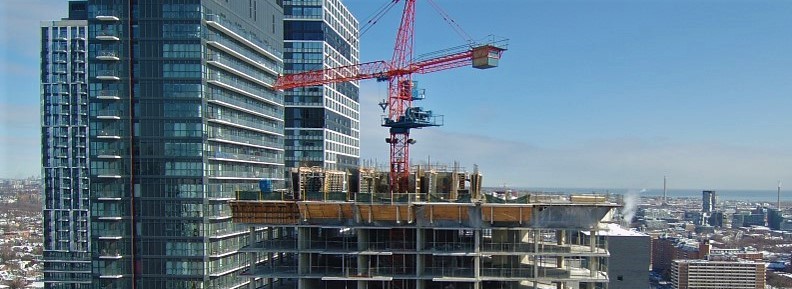


What is an investment in the manufacturing of housing? On a small scale its an individual or a small builder purchasing a lot, building a new home and selling it to generate a profit. On a much larger scale this refers to the acquisition of land, and the development and sale of hundreds of new homes (condominium towers, multifamily buildings, master-planned communities) brought to market by top tier real estate developers. The latter is a capital-intensive business in which developers typically rely on a universe of investment partners that include large institutional investors, pension funds, ultra high net-worth families, and more a growing number of qualified individual investors able to make smaller investments in projects.
Investments in this segment of the real estate market can offer compelling investment returns, and as such, has attracted the attention and investment of thousands of people eager to participate in an asset class to grow their investment capital and diversify their investment holdings.
While these types of investment opportunities are very compelling, if you are considering an investment in this real estate segment, it is important to understand the following five aspects of the deal before making an investment.
The first thing you need to have a clear understanding of are the specifics of the proposed development and the key assumptions that are being made by the organization or team offering the investment. At a high level, it can be useful to divide your assessment of the opportunity into two categories; consideration of the macroeconomic investment thesis, and an understanding of the project-specific development plan.
Macroeconomic Investment Thesis
You should understand the type of development being proposed and take the time to think through the key factors that can determine its success or failure.
At the most basic level, investors should assess if the market has a stable or growing demand for the housing type being proposed. Ideally, preference should be given towards markets that demonstrate strong long-term fundamentals such as consistent population growth (through migration or other factors), a well-diversified economic and employment base, and a shortage of housing that is driven by persistent factors such as industry capacity constraints, planning restrictions, or other structural factors rather than short-term dislocations in supply that can be easily resolved.
Project-Specific Plan and Assumptions
Simply looking at the expected return (whether high or low) without understanding if the key assumptions being made are conservative, reasonable, or aggressive does not provide a sufficient basis to determine if the investment is worthwhile or not. Ask questions to understand the underlying project assumptions and to determine whether or not they are reasonable.
The capital used to fund large-scale development can take many forms. Developers (sometimes referred to as Sponsors) often use a combination of equity, preferred equity or mezzanine debt, and senior debt to fund their projects. Understanding the differences between each type—as well as the structure of the investment vehicle being used—will help you to properly assess the risk/reward trade-off being offered by the investment under consideration. The level of return you should expect is fundamentally related to the degree of risk involved, and properly understanding the investment structure will allow you to better assess if the risk/reward for the investment is appropriate for you, given your individual objectives/preferences.
For our purposes, we will consider an equity investment in this asset class. As a common equity holder, you would receive either a direct or indirect ownership interest in the development. Equity investments come with certain entitlements, including most importantly direct and uncapped participation in the profits of the project if it performs well. However, equity bears more risk within a development’s capital structure, as it is usually the first money in and last money out. Thus, the structure used to make an equity investment and the protections and entitlements offered are most critical in assessing whether an equity investment is worth pursuing (i.e. does it offer an attractive risk/reward trade-off). Equity investment returns can vary widely but typically are between 16% to 20% average annualized returns. To learn more about the various types of capital within a typical real estate capital stack, read our post Understanding the Real Estate Capital Stack.
Next, as an investor you need to understand the investment structure. The typical private equity real estate investment structure is a limited partnership (LP). In a limited partnership, the General Partner (GP) is responsible for making decisions alongside the day-to-day manager of the development (the Sponsor) and representing the best interests of the LP (the equity investors in the project). The GP has certain legal obligations to perform on behalf of the LP, though the degree of “protection” and “upside” that limited partners are entitled to is determined by the very specific terms of the joint venture that’s established between the LP and the Sponsor.
A good GP is not only focused on generating a profitable outcome for limited partners, but also negotiates several protections within the joint venture agreement that helps protect equity investors and ensures that their risk/reward trade-off is maximized. Investors should ensure that the Limited Partnership contains several key investor protections that a GP can exercise on their behalf. Good investor protections include, but are not limited to:
Regardless of whether you choose to invest in the equity, preferred equity/mezzanine debt, or senior debt (if it’s available), it is critical to review and understand the risk factors. The GP (or Sponsor) should be adequately identifying and addressing these risks in the form of a comprehensive information memorandum, investor presentation, as well as through discussions with qualified representatives of the GP/Sponsor.
Investing in development is about understanding not only the upside potential, but also the potential risks that exist and getting comfortable with the GP/Sponsor’s experience and ability to mitigate them successfully. While each development project is different, we will touch on a few potential risks.
Last, but certainly not least, the strength and quality of the team that is responsible for executing the development plan is of paramount importance.
Regardless of the investment thesis, plan, or assumptions made, the on-the-ground execution and the decisions being made by the GP and Sponsor are the primary determinants of a project’s success or failure. It’s important to be comfortable with the quality of the team, and to make sure that within the investment structure, your incentives as an investor are aligned with those of the execution team.
Private investments in residential real estate development can offer attractive investment returns. However, it’s important to understand the benefits and the risks associated with each development and to ensure that these investments fit with your investment goals. If you are considering an investment in large-scale residential development, it is highly recommended that you also engage in a discussion with an expert who can help you further assess the merits of the investment opportunity.
At Greybrook, we provide qualified investors with direct access to institutionally-underwritten and professionally managed, residential real estate investment opportunities. We exclusively participate as an equity partner in large-scale residential developments and have partnered with some of North America’s largest developers (Sponsors) on the development of over $15 billion worth of residential real estate in our chosen markets. Our team of Capital Markets professionals support over 7,000 individual investors, and are equipped to help you better understand and assess whether investment opportunities in this asset class are right for you.
Contact us to learn more or to speak with one of our investment representatives.